
SUBMINIATURE ENLARGER LENSES

After choosing an enlarger, the most difficult buying decision that a darkroom worker can make is choosing among the multitude of enlarging lenses available. Many never make this decision, opting to use the discount lens that often comes packaged with their enlarger. But depending on what it is, there are several good reasons to swap out that original lens. Unfortunately, unless an individual has a background in physics and hands-on experience with many lenses, the choice ends up being based on hearsay, rumor, and what the salesman behind the counter has to sell. Here's some points to consider when comparing the various enlarging lenses that can be used for subminiature work.
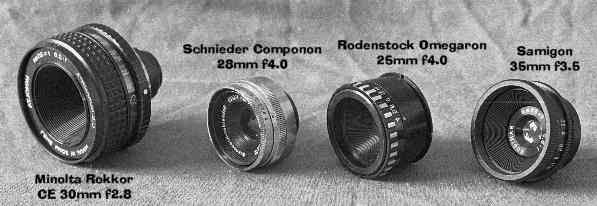
WHAT FOCAL LENGTH DO I NEED?
Focal length is usually defined as the distance from a lens' optical center to its focal point. But such definitions have little practical application in the darkroom. Mst of use think about focal length as the area of coverage. A wide angle lens takes a lot in, while a telephoto magnifies the image. It's somewhat the same with enlarging lenses -- with a twist. Start by remembering that with enlarging lenses, the focal length will determine how big a print you'll get on the baseboard. The shorter the focal length of the lens, the greater the magnification. In fact, it's the exact opposite of the typical camera lens! For example, at two feet above the baseboard, a 50mm lens with a 10x14mm negative will produce a print about 4 x 5 inches. With a 25mm lens in the same situation, you'll get an 8 x 10 inch print. With a 50mm lens you'd need to raise the enlarger negative stage to four feet above the baseboard for an 8 x 10! An easy way to think about this is to imagine your negative inside the camera with the light coming from BEHIND the negative. A 25mm lens will spread the light out much wider than a 50mm lens at the same distance. And that's what happens on an enlarger!
To keep the enlarger head at a manageable height, the rule of thumb is to get a lens equal to (or only slightly longer than) the diagonal of the film format in use. This means that if you use more than one subminiature format, such as Minox and half-frame, you will want to get one enlarging lens for each format. A lens that produces good-sized prints for the half-frame format will yield prints that are too small from a Minox negative.
In addition, all enlarging lenses are designed to give their best performance at a particular magnification. If you are using a 50mm lens to make Minox enlargements, you are actually using the lens at a very high magnification. This will surely degrade the image to a certain extent. Many lenses will let you know what magnifications it is best for. Of course the less expensive lenses won't provide you with this information, but they are usually optimized for about 8x -- a 3x5 inch print with a 10x14mm negative, for example.
LENS COVERAGE
Another vital specification about an enlarging lens is its coverage -- how big a negative it can "see". Usually, the longer the focal length of the lens, the larger the negative it will cover. Fortunately for those with overburdened memories, the numbers here also generally follow the "diagonal of the film format" rule. That is, a 15mm (or longer) enlarging lens will cover Minox film, lenses in the 25mm-28mm (or longer) range will cover the various 16mm formats, and lenses in the 28mm-35mm (or longer) range will cover half-frame images. But every rule has exceptions, and lenses shorter than or longer than the normal focal length are sometimes useable when they shouldn't be, and sometimes not useable when they should be. Manufacturers can make an enlarger lens with wider or narrower coverage. For example, the super-quality 30mm f2.8 Minolta CE lens will not cover a half-frame negative even though the diagonal of the half-frame negative is 30mm. The 30mm 2.8 Computar DL, on the other hand, will cover full-frame 35mm images (43mm diagonal). Go figure.
How can you tell if a lens will cover a particular format? Without the owner's manual, you can never know for sure. When buying a used lens, make sure you can return it -- no questions asked.
HOW IMPORTANT IS SPEED?
Along with focal length, the maximum aperture of a lens is a fundamental parameter of its design. Large maximum apertures ("fast" lenses) are not as important in the darkroom like they can be when you're taking pictures, but a faster lens will provide more light to the baseboard for easier focusing and composing. For example, a 30mm f2.8 lens produces a brighter image that is usually easier to focus than a 30mm f4 lens will. But a lot depends on the brightness of your enlarger's light source. If you have a very bright enlarger head it can actually be too bright to focus at the maximum aperture.
Keep in mind, however, that all enlarging lenses provide their sharpest image when stopped down two to three stops -- most f2.8 lenses are sharpest at f5.6-f8. When opened all the way for focusing, the image will not appear as sharp as it will stopped down. In addition, it will not provide optimum sharpness if used at the maximum aperture.
Another reason to focus at the actual f-stop -- as opposed to the maximum f-stop -- is focus shift. All lenses suffer from it to some extent, but some lenses are much worse than others. Aside from the issue of negatives popping from the heat generated by the enlarger light source (not a big issue with submini negatives, but something to watch for, and a good reason to use a heat-absorbing glass if using a condenser head) the point of focus can change when the lens is stopped down. This is overcome -- some would say masked -- by the increased depth-of-field when stopping down, but it's a good idea to test your lens for this affect. First, focus your image with the lens wide open. Now stop-down two f-stops. The image should get dimmer, but sharper. Now refocus the lens, slightly, to see if you can get it even sharper! If you can, your lens suffers from lens shift.
WATCH THOSE ABERRATIONS
The degree to which an enlarging lens is designed to correct optical aberrations and the quality of its construction determine its ability to produce sharp images. Defects such as distortion, edge light fall-off, and chromatic aberration (the inability of a lens to focus red, blue, and green light to a common point) are all corrected to some degree in all lenses. Simple, inexpensive lenses usually do the job least well, while more complex (and inevitably more expensive) lenses come closest to perfection -- assuming they are constructed correctly. In short, when it comes to enlarging lenses you usually get what you pay for. An inexpensive lens rarely outperforms one of moderate price, and the latter is unlikely to outperform an expensive lens. The reason is that more complex lens designs usually perform best, and it costs the manufacturer more to build such lenses. The number of elements gives you a good idea of the optical sophistication of the lens. Generally, the more elements a lens has, the more corrected it is for aberrations. A lens element is an individually ground lens. Elements are assembled in various combinations to achieve a desired optical effect. When two or more elements are combined to act as one lens component, they are called a group.
Of course, even well-designed lenses can be poorly constructed and produce poor results. A study by Darkroom Photography several years ago, found that about one out of every three enlarging lenses showed significant construction defects that significantly impacted the results. More interesting was that this poor quality control was just as likely to occur with expensive lenses and did not vary from one company to another. The costly lenses are more difficult to manufacture and suffer the same failure rate as less-costly, but easier-to-manufacture lenses. I bought a new Minolta 30mm 2.8 lens many years ago which never focused correctly. When I got fed up and sent it back to Minolta, they corrected the problem -- misaligned elements.
Some of the optical aberrations of a lens you can test for yourself are light fall off and resolution.
How the lens is used is the most important part of eliminating image aberrations. Using a lens without knowing its optimum aperture will ruin more images than anything else. An inexpensive lens used at its optimum aperture will outperform the most expensive lens that is used stopped down, for example.
BASIC DESIGNS
There are three common configurations in enlarging lenses on the market today. The least expensive lenses are of the three-elements in three-group (3/3) design. These lenses perform well for making black-and-white enlargements up to 11 x 14 inches. But attempting higher magnifications or color work will result in diminished sharpness and contrast. These 3/3 lenses are a good bet for the budget-minded photographer who is not interested in making big prints or color, especially for a format that you use only occasionally. Make sure that you test these lenses for their optimum aperture and stick to that aperture.
The second enlarging lens type is moderately-priced and has four elements in three groups (4/3). That extra element in the design provides for improved contrast and resolution, and these lenses are a good choice for the photographer who needs more versatility from a lens for regular submini work, bigger prints or color endeavors.
The most expensive category of enlarging lenses, the six-element in four-group (6/4) variety, will gives excellent performance in both high magnification and color applications. Such correction is not attained without some penalty, however. Not only are these lenses much more expensive (current warehouse prices for 6 element f4.0 28mm lenses are over $400) these lenses have a restricted magnification range in which they can provide their near perfect optical correction. If you shoot extensively in a particular format, if you want super-sized enlargements, or if you do a lot of color work, you should consider one of these optics.
Here are some sample shots with three lenses of the central portion of a 35mm negative at extreme magnification. The images you see are approximately a one inch square section from what would be a 24x36 inch print -- that's a two by three feet print! With prints this big we are able to examine the grain structure directly to determine picture quality:
| Maximum f-stop |
Samigon 35mm f3.5 (3 elements / 3 groups) |
Rodenstock 35mm f4.0 (4 elements / 3 groups) |
Minolta 30mm f2.8 (6 elements / 4 groups) |
| f2.8 | -- | -- | 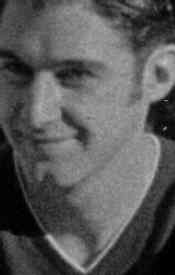 |
| f3.5 | 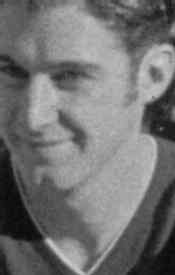 |
-- | -- |
| f4.0 | 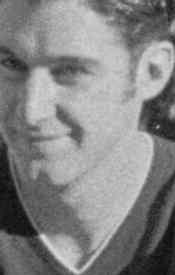 |
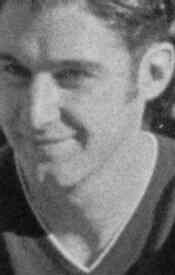 |
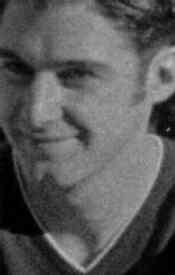 |
| f5.6 | 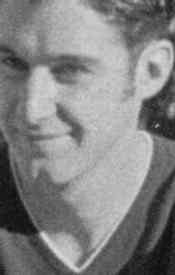 |
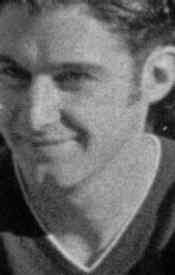 |
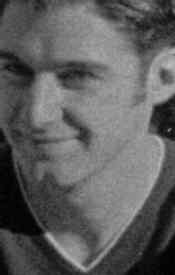 |
| f8.0 | 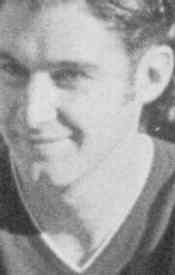 |
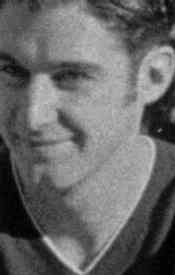 |
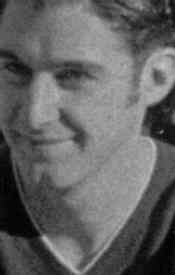 |
Since the resolution of the computer screen cannot show fine detail and will only show the largest discrepancies in the images, we will add a few comments. The Minolta will be used as a point of comparison -- the gold standard. In general, we see two factors affecting the quality of the results -- the accuracy of the f-stops setting which affects the exposure and the optics of the lens which determines the print sharpness.
The Minolta (6 elements/4 groups) results are top-notch. Perhaps the most amazing thing is how fast this lens is and how good the quality is open all the way. The results are very slightly sharper at f4.0 and f5.6 (compared to f2.8). The results start to soften very slightly at f8.0. This lens is optimized for 26x enlargements and this one is only a 10x print. Results show that f2.8 through f8.0 are all useable apertures. Exposures are exceptionally consistent from f-stop to f-stop.
The Rodenstock (4 elements/3 groups) also shows fine results but with more limitations. At f4.0 the exposure is noticeably lighter, suggesting that the maximum aperture is a little less than f4.0 (f4.2?). The results are a little less sharp as well. Stopping down to f5.6 shows results as sharp as the Minolta at that aperture. At f8.0 the results start to soften. In other words, with this lens, stay as close as you can to f 5.6 and you will get top-notch results.
The Samigon (3 elements/3 groups) showed good results for the money. The Samigon is, by far, the least expensive lens in this crop. Open all the way to f3.5, the results are slightly soft and the exposure is a little light. Stopping down to f4.0, improves both of these factors. At f5.6, the sharpness continues to improve and is only a little less sharp than the Minolta. By f8.0, the sharpness starts to drop and so does the accuracy of the f-stop. If you are going to use a lens of this type, make sure you stick to f 5.6 and don't make prints larger than 11x14.
Overall, these are exactly the types of results we would expect to see. The more elements in a lens, the more useability at more aperture settings. The lens will also be useable over a wider magnification range and may even have a wider aperture. It might also have more convenience features. But the occasional user who does not make large prints can be quite happy will a less expensive lens.
BELLS AND WHISTLES
Some manufacturers provide half-stop clicks on their aperture rings for finer control. Others provide illuminated aperture rings so you can change settings more easily in the dark. A new innovation is to provide click-stop override so that the lens may be operated without click-stops. This feature is useful when you're using a color analyzer and want to precisely "null" the meter. Some lenses also offer a stop-down lever. With this feature, you set the lens aperture with the lights on and can easily switch between full aperture (for focusing) and stopped down (for exposure). But look at convenience features last. A lens with lots of features, but poor quality, is not a bargain at any price.
ENLARGER MEETS LENS
Normally, enlarger lenses do not attach directly to the enlarger. They operate like screw-mount camera lenses, but they are screwed into a metal board that is then attached to the enlarger. But short focal length enlarger lenses can sometimes have trouble "mating" to some enlargers. If you are using an enlarger that was designed for subminiature work, you probably will not have a problem. For example, the Minox enlarging lens was designed to be used on a Minox enlarger. But enlargers that were designed for larger formats, such as 4x5 or bigger, were not designed with the smaller formats in mind. These enlargers frequently have a limit to how close the lens stage can get to the negative stage, and if it can't get as close as the focal length of your submini lens, it won't focus.
One solution to this problem is the use of recessed lens boards. These allow the lens to get closer to the negative. But these are expensive, hard to find, hard to order, and your enlarger company may not have made one that will fit you lens. Even if you find one, you are not out of the woods. Some lenses are too fat (or some recessed boards are too narrow) to work together. In addition, once you get the lens on the board, it's hard to see the f-stops (you may have to count click-stops), and it can be difficult to get your fingers on the aperture ring (the things we go through for our subminiature cameras!).
Submini enlarger lenses can be very small. One reason for this is that they don't need to be big, but they are sometimes made smaller to fit into recessed boards. Unless you have big fingers, this is not a huge problem, but these smaller lenses sometimes comes with smaller thread sizes which can be a problem. The "Leica" mount (39mm screw mount) is most common, but many submini lenses (some of the best) come in other size threads, such as 32.5mm and 25mm. Your enlarger company may not have made a lensboard with this thread size or if they do it may not be a recessed type. You have solutions. First, some lens companies make step-up rings to increase the size of the thread size to 39mm, although these may be hard to find. If all else fails, get an undrilled lens board -- just about everybody makes these -- and have it drilled at a local machine shop to match your lens.
IN SHORT
Top-notch enlarging lenses for subminiature work aren't always expensive, especially if bought used. Remember that used lenses, like all used darkroom equipment, has not been exposed to the elements like regular camera gear can be. Much of the time, the darkroom equipment has seen little use. But whether you decide on a new or used enlarger lens, make sure that it comes with a no-questions-asked return policy. Test the lens as soon as you get it, compare it to the results from other enlarger lenses, and return it if it doesn't stand up to your needs.
An enlarger lens should last a lifetime. For the formats that you use the most, it pays to invest in a lens you'll be satisfied with.
Here is a list of some enlarger lenses that have been made over the years and that are suitable for submini work. It only includes lenses with focal lengths SHORTER than 40mm. While longer lenses can be used with submiature formats, the lens has to be substantially higher on the enlarger column -- even with small enlargements.
While this is NOT a complete list of lenses, it is also not a list of any sort of recommendation. Generally speaking, the more elements the enlarging lens has, the better quality print it will make. And it will maintain that quality over a wider range of f-stops and maginifcation settings. Unfortunately, you cannot determine the number of elements by the maximum aperture, the price, the company name, or any other external characteristic. If you have more information than that listed here, please contact us.
Many of these lenses were made with different names on them -- even though they are exactly the same lens.
It is doubtful that any of these lenses are still in production. They can be easy to find -- or difficult -- depending on how many were produced. Usually, the more expensive lenses are harder to find since fewer were produced.
And if you happen to be interested in a rather complete list of enlarging lenses for ALL formats, check out John Kovic's Search Results Photo Cornucopia web site.
COMPANY/
DISTIBUTOR
NAMELENS
NAMEFOCAL
LENGTHf-STOP
RANGEOPTIMAL
FORMATTHREAD
SIZENUMBER OF
ELEMENTSOPTIMAL
MAGNIF-
ICATIONCOMMENTS
Aetna Optix
Coligar
25mm
3.5-11
16mm
15mm?
3
?
Hard to find
Coligar
35mm
3.5-16
1/2 frame
39mm
3
?
Exactly the same as the Perfex, Pritz, Vivitar, Soligor, etc.
Agfa
Colostar N
38mm
4.5-16
1/2 frame
27.4mm(?)
5
?
Good luck finding one of these!
AIC
(Allied
Impex
Corporation)AICO
35mm
3.5-16
1/2 frame
39mm
3
?
Exactly the same as the Perfex, Pritz, Vivitar, Soligor, etc.
AICO-PSL
35mm
3.5-16
1/2 frame
39mm
3
?
New recessed body with apertures not on the face
Also sold as Vivitar, Soligor, Samigon, etc.
Soligor (V1)
35mm
3.5-16
1/2 frame
39mm
3
?
Exactly the same as the AICO, Perfex, Pritz, Vivitar, etc.
Soligor (V2)
35mm
3.5-16
1/2 frame
39mm
3
?
New recessed body with apertures not on the face
Also sold as Vivitar, AICO-PSL, Samigon, etc.
Amcam
Prinz (V1)
35mm
3.5-16
1/2 frame
39mm
3
?
Exactly the same as the Perfex, Soligor, Vivitar, Coligar, etc.
Prinz (V2)
35mm
3.5-16
1/2 frame
39mm
3
?
New recessed body with apertures not on the face
Also sold as Vivitar, AICO-PSL, Samigon, etc.
Anaret
see Meopta
Astron
Astron
35mm
3.5-16
1/2 frame
39mm
3
?
Also sold as Vivitar, AICO-PSL, Samigon, etc.
Atoron
see Yashica
Bausch & Lomb
Micro Tessar
this is a microscope lens
Bausch & Lomb
35mm
3.0-16
1/2 frame
plate?
?
?
It's possible this is a microscope lens, too
Macro
this is a microscope lens
Belar
often confused with "Beslar" -- see Meopta
Berkey
Rodenstock-Omegaron
25mm
4.0-16
16mm
32.5mm
4
20x
Later sold as the Rodenstock Rogonar-S
Rodenstock-Omegaron
35mm
4.0-16
1/2 frame
32.5mm
4
20x
Beseler
Beseler
38mm
4.5-16
35mm
39mm
4
10x
Same as the Dyotar and Jessop
Beslar
35mm
3.5-16
1/2 frame
39mm
3
12x
Also sold as Vivitar, Soligor, Samigon, etc.
Bogen
Voss
25mm
3.5-16
16mm
39mm
4
10x
Also sold as the Minilen-25
Voss
38mm
3.5-16
35mm
39mm
4
10x
Like the 25mm, this has a recessed design
Voss
38mm
4.0-16
35mm
39mm
4
10x
Most likely just a typo in the Voss catalog
Cambridge
CameraEL Cambron
25mm
4.5
10x14mm
39mm
4
?
The EL Cambron line ranged from 25mm to 105mm
but who knows who made them???
EL Cambron
35mm
3.5
1/2 frame
39mm
4
?
Chaika
see MMZ-Belomo
Coligor
see Aetna Optix
Congo Jr
see Yamasaki
Componon
see Schneider
Computar
Computar DL
25mm
2.8-22
35mm
39mm
9
16x
Quickly replaced by the 30mm version below
Computar DL
30mm
2.8-22
35mm
39mm
9
16x
Nice, if you can find one
Also sold under the Kowa label
Coronar
see Munchen
Corygon
see Munchen
D.O. Industries
Fujinon-EP
38mm
4.5-22
35mm
39mm
6
10x
Like the Olympus 38mm, just a beautiful lens
Dyotar
38mm
4.5-16
35mm
39mm
4
10x
Same as the Beseler and Jessop
D.O.Industries,Inc.
35mm
3.5-16
1/2 frame
39mm
3
?
Exactly the same as the Perfex, Pritz, Vivitar, Soligor, etc.
Durst
Durst
38mm
4.5
35mm
N/A
4
8x
Marked as "Durst", but made by Schneider and
only available attached to the Durst Magico enlarger
Dyotar
see D.O. Industries
E-Congo Jr
see Yamasaki
Elgeet
Now named "Navitar", they made some enlarging lenses but probably not for submini enlargers
E-Lucky
see Fujimoto
ENLA
see Mamiya, Minolta, Minox, and Yashica
Escot
Escot Anastigmat
25mm
3.5-11
1/2 frame
15mm!!!
?
?
Very small and sold with a 39mm adapter plate.
Also sold as the Ultima
Eurygon
see Rodenstock
Fujimoto
E-Lucky
38mm
2.8
35mm
39mm
?
?
Not to be confused with Fuji, Fujifilm or Fujinon (see below).
Possibly, probably sold under other labels.
E-Lucky
38mm
4.0
35mm
39mm
?
?
Fujinon
see D.O. Industries
Gami
Officine Galileo
30mm
4.0
12x17mm
?
?
?
The f-stop is not adjustable
Goerz
Minilux
25mm
2.0
10x10mm
N/A
6
?
The Minicord camera attaches to the Minilux enlarger
and the camera lens is used for enlargements
Goldrich
see Computar
Jessop
Jessop
38mm
4.5
35mm
39mm
4
10x
Same as the Beseler and Dyotar
Kowa
Kowa
30mm
2.8-22
35mm
39mm
9
16x
Same as the Computar 30mm
Kyvyx
Kyvytar
38mm
4.5-16
35mm
39mm
4
10x
Imposible to find
Lucky
see Fujimoto
Macrotar
see Spiratone
Magico
see Durst
Mamiya
ENLAHEAD (V1)
with Optor lens25mm
3.5
10x14mm
39mm
?
?
Mamiya made five verions of the ENLAHEAD
with slightly different features --
ex. gray vs black bakelite body,
flat vs curved negative carrier,
f-stop color and size,
focusing ring size and shape, etc.
They probably all had the same 25mm lens.
All versions had only one film holder --
for 10x14mm images.
ENLAHEAD (V2)
with Mamiya lens25mm
3.5
10x14mm
39mm
?
?
ENLAHEAD (V3)
with Mamiya lens25mm (?)
3.5
10x14mm
39mm
?
?
ENLAHEAD (V4)
with Mamiya lens25mm
3.5
10x14mm
39mm
?
?
ENLAHEAD (V5)
with Mamiya lens25mm (?)
3.5
10x14mm
39mm
?
?
Meopta
Anaret
30mm
4.5-16
10x14mm
& 13x17mmsee note
4
?
May have been produced in both
23.5mm and 39mm mounts
Belar
these are enlarging lenses, but not for subminis
Mirar
20mm
3.5
10x14mm
?
?
?
This is probably just the lens taken off the Meopta Mikroma
Mirar
20mm
5.6
10x14mm
?
3
6x
Attached to the Meopta Mignoret fixed-height, mini-enlarger
Mirar
35mm
3.5-22
1/2 frame
39mm
?
?
Minilen
Minilen-25
25mm
3.5-16
16mm
39mm
4
10x
Also sold as the Bogen Voss 25mm
Minilux
see Goerz
Minolta
E*Rokkor
25mm
3.5
10x14mm
39mm
4
?
E.Rokkor
30mm
4.5
10x14mm
& 12x17mm39mm
4
?
C.E.Rokkor-X
30mm
2.8
10x14mm
& 12x17mm39mm
6
26x
A true gem, but it won't quite cover 1/2 frame.
In the US market, it was originally
designated "C.E.Rokkor-X", while outside the US
the "X" was dropped. Minolta later dropped
the "Rokkor" name from their lenses, and it was
simply labeled "C.E. Lens".
C.E.Rokkor
30mm
2.8
10x14mm
& 12x17mm39mm
6
26x
C.E.Lens
30mm
2.8
10x14mm
& 12x17mm39mm
6
26x
ENLA unit
with E.Rokkor30mm
2.8
10x14mm
& 12x17mm39mm
6
?
It came with two film holders
-- 10x14mm & 12x17mm.
Minox
Micro-Minox
15mm
3.5
Minox
special plate
?
?
It'a really an ENLA unit with a lens and a condenser
The f-stop is not adjustable
Mirar
see Meopta
MMZ-Belomo
Chaika
(AKA,Yanka)28mm
2.8-16
1/2 frame
39mm
?
?
The camera lens on MOST Chaika models was
designed to unscrew -- for use on an enlarger
Munchen
"S" Coronar 2.8
35mm
2.8-22
1/2 frame
25mm
6
?
Munchen made several enlarging lenses over the years,
but these two may never have made it into production.
Corygon 2.8
35mm
2.8-16
1/2 frame
25mm
3
?
Officine Galileo
see Gami
Olympus
F. Zuiko E
38mm
2.8-16
1/2 frame
39mm
6
?
Like the Fujinon 38mm -- just a beautiful lens
Omegaron
see Berkey and Rodenstock
Perfex
Perfex
25mm
3.5
39mm
3
?
see Testrite
Phago
Phago Anastigmat
35mm
3.5
1/2 frame
39mm
?
?
Exactly the same as the Perfex, Pritz, Soligor, Coligar, etc.
Ponder and Best
Vivitar Anastigmat
35mm
3.5
1/2 frame
39mm
?
?
Exactly the same as the Perfex, Pritz, Soligor, Coligar, & Phago Anastigmat.
Vivitar
35mm
3.5
1/2 frame
39mm
?
?
Same lens as above, just not marked "Anastigmat"
Prinz
see Amcam
Raptar
see Wollensak
Rodenstock
Eurygon
35mm
4.0-16
--
40mm &
39mm & ?Sometimes listed as an enlarging lens, it was designed as a macro lens for a #1 shutter
with a 40mm thread, but can be found with a 39mm thread, and perhaps others.
Trinar
20mm
2.5
?
3
?
Although Rodenstock made Trinar enlarging lenses,
this one may just be a lens from the View-Master camera
Omegaron
see Berkey
Rogonar-S
25mm
4.0-16
16mm
32.5mm
4
20x
These are the same as the
Ysaron (not sold in North America),
and the Omegaron
Rogonar-S
35mm
4.0-16
1/2 frame
32.5mm
4
20x
Rogonar-S
35mm
2.8-16
1/2 frame
32.5mm
4
20x
Yet another phantom, submini, enlarging lens
It's listed in their literature, but might be a typo
Rodagon
28mm
4.0-16
16mm
32.5mm
6
20x
Top of the line for Rodenstock
Rodagon
35mm
4.0-16
1/2 frame
32.5mm
6
20x
Top of the line for Rodenstock
Ysaron
25mm
4.0-16
16mm
32.5mm
4
20x
These are the same as the
Rodagon-S and Omegaron,
but sold in Europe
Ysaron
35mm
4.0-16
1/2 frame
32.5mm
4
20x
Rokkor
see Minolta
Rolyn
see Munchen
Samigon
Samigon
35mm
2.8
1/2 frame
39mm
?
?
This version may not exist
Samigon
35mm
3.5-16
1/2 frame
39mm
3
?
Also sold as Vivitar, Soligor, AIC-PSL, etc.
Samigon
35mm
3.5-16
1/2 frame
39mm
3
?
New recessed body with apertures not on the face
Schneider
(see also Durst)Componon
28mm
4.0-22
16mm
25mm
6
10x
The appearance and features evolved over time
such as the minimum f-stop (16 vs 22),
front & rear thread (25mm vs 39mm), etc.
Componon
28mm
4.0-16
16mm
39mm
6
10x
Xenon
28mm
2.0
16mm
25mm
6
10x
A hard-to-find, super-fast version
Componon
35mm
4.0-22
1/2 frame
25mm
6
10x
The appearance and features evolved over time
such as the minimum f-stop (16 vs 22),
front & rear thread (25mm vs 39mm), etc.
Componon
35mm
4.0-16
1/2 frame
39mm
6
10x
Xenon
35mm
2.0
1/2 frame
25mm
6
10x
A hard-to-find, super-fast version
Soligor
see AIC
Spiratome
Macro
35mm
3.5
1/2 frame
39mm
3
?
Exactly the same as the Perfex, Pritz, Vivitar, Soligor, etc.
but marked and sold as a bellows macro lens
Macrotar (V1)
35mm
3.5
1/2 frame
39mm&
42mm3
?
Name change from the earlier Spiratone Macro 35mm f3.5
Spiratone (V1)
35mm
3.5
1/2 frame
39mm
3
?
Same as the Macrotar (V1) 35mm f3.5 but lens only marked
"SPIRATONE" with box marked "ENLARGING LENS"
Macrotar (V2)
35mm
3.5
1/2 frame
39mm
3
?
New recessed body with apertures not on the face
Spiratone (V2)
35mm
3.5
1/2 frame
39mm
3
?
New recessed body with apertures not on the face
Taylor
Tayon
35mm
3.5-16
1/2 frame
39mm
3
?
Exactly the same as the Coligor, Perfex, Pritz, Vivitar,
Soligor, etc.
Testrite
Perfex Anastigmat
35mm
3.5-16
1/2 frame
39mm
3
?
Exactly the same as the Coligor, Pritz, Taylon, Vivitar,
Soligor, etc.
Thimble
Thimble
25mm
3.5
16mm
15mm?
?
?
Same as the Ultima and Escot?
Tomioka
Tominon
17mm
4-22
?
40mm
Designed as a process/macro lens for a #1 shutter with a 40mm thread,
it has a smaller inner 25mm thread, and can be adapted for enlarging.
Tominon
35mm
4.5-32
?
40mm
Designed as a process/macro lens for a #1 shutter with a 40mm thread,
it has a smaller inner 25mm thread, and can be adapted for enlarging.
Trinar
see Rodenstock
Ultima
Ultima Anastigmat
25mm
3.5-11
1/2 frame
15mm!!!
?
?
Very small and sold with a 39mm adapter plate.
Also sold as the Escot
Vivitar
(see also
Ponder & BestVivitar
35mm
3.5
1/2 frame
39mm
?
?
New recessed body with apertures not on the face
also see Ponder & Best
Voss
see Bogen
Yamasaki
E-Congo Jr
35mm
3.5
1/2 frame
39mm
3
?
Also sold as Vivitar, AICO-PSL, Samigon, etc.
Yanka
see MMZ-Belomo
Yashica
Atoron unit
with E-Yashinon-DX21mm
3.5-16
Minox
39mm
?
?
Made by Tomioka
Wollensak
Enlarging Raptar
1"
(25mm)4.5
16mm
1 5/8" (?)
41.275mm?
?
Unlike most Raptar lenses, this one is marked "ENLARGING",
and VERY hard to find!.
Xenon
see Schneider
Ysaron
see Rodenstock
Zuiko E
see Olympus
To return to the main index for the Sub Club click here.
COPYRIGHT @ 1995-2025 by Joe McGloin. All Rights Reserved.